Politics
From Trump Funders to Pals of Putin, Here Are 10 Politically Intriguing Eastern European Art Collectors to Know
artnet News has assembled dossiers on the art-world connections of men named in the "Kremlin Report," plus two others of note.

artnet News has assembled dossiers on the art-world connections of men named in the "Kremlin Report," plus two others of note.

Artnet News

This week marks the beginning of Paul Manafort’s trial on charges of various financial improprieties, with FBI agents working for special counsel Robert Mueller opening their prosecution of the former Trump campaign manager in a Virginia courthouse. As a result, Manafort’s longstanding relationships with Eastern European tycoons like the Russian aluminum baron Oleg Deripaska—who gave the career lobbyist a mysterious $10 million loan, and to whom Manafort allegedly offered to provide “private briefings” on the presidential race in 2016—are once again in the news.
Russian oligarchs are colorful people, and those who have minted their fortunes in natural resources (aluminum, gas, etc.) and other industries connected to the Russian state often have substantial ties to the art world. It’s no surprise that such magnates are involved in patronage, and several in fact participate in the higher echelons of the art market, buying celebrated artworks and even building their own museums. If you’re lucky, you just might spot one at the auctions, art fairs, and events like the Venice Biennale that attract the international art community.
So who are these tycoons, how did they make their money, and what role are they playing in the art world?
Here, as a handy primer, artnet News has assembled dossiers on 10 prominent collectors, many of whom made their fortunes through industries with close ties to the Russian government. Eight of these men—and they are all men—were featured in the US Treasury Department’s so-called “Kremlin Report” of wealthy Russians worth more than $1 billion. (The Treasury made clear that wealth alone landed oligarchs on the list, rather than any evidence of “malign activities.”) The two others, Victor Pinchuk and Len Blavatnik, have either paid fees to the Trump Foundation or donated handsomely to the Trump inauguration.
Below, we also outline what we know about how and whether these individuals fit into the broader picture informing Mueller’s investigation.
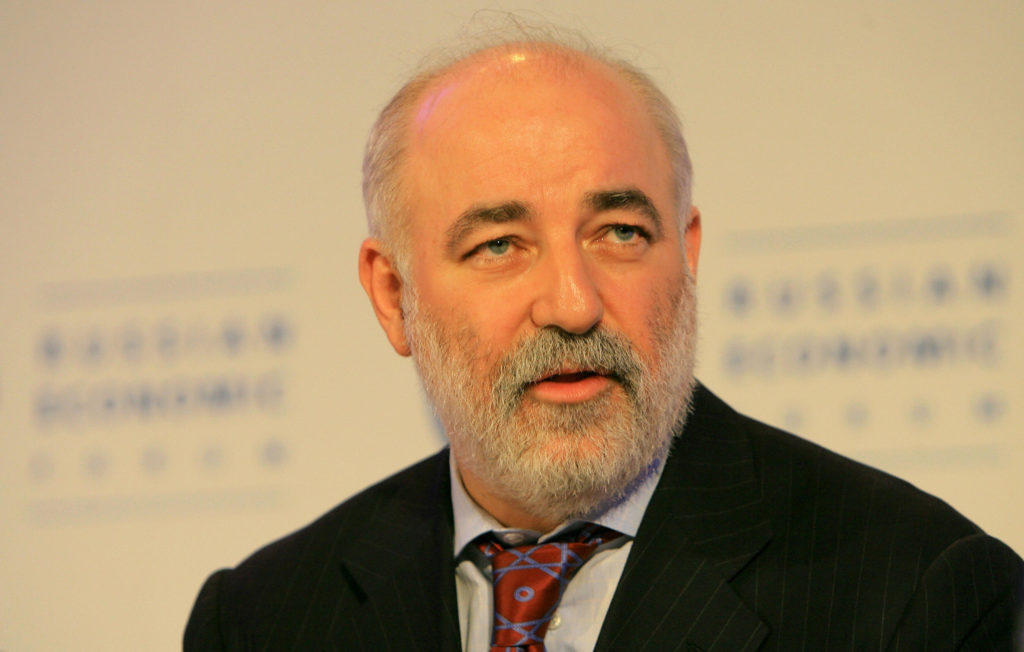
Viktor Vekselberg. Photo by Odd Andersen AFP/Getty Images.
NATIONALITY: Ukrainian, Russian, and Cypriot
AGE: 61
ESTIMATED NET WORTH: $13.3 billion
BUSINESS ACTIVITIES: Vekselberg owns Renova Group, a Russian aluminum, oil, and energy conglomerate that he founded after former Soviet Union president Mikhail Gorbachev relaxed Russian restrictions on private businesses.
ART-WORLD ACTIVITIES: Vekselberg has made a habit of collecting art and repatriating it back to Russia. In 2004, he established the Link of Times foundation to restitute Russian art from abroad. He acquired the late Malcolm Forbes’s collection of Fabergé’s imperial Easter eggs, which the jeweler had created for the last two emperors of Russia, as well as six other Fabergé eggs, for more than $100 million. He then set up a museum in St. Petersburg to display the trove along with other decorative art objects from Russia. All told, Vekselberg owns most of the world’s 43 surviving Fabergé eggs.
In 2005, he also paid £1.7 million ($2 million) at a Christie’s auction for a work attributed to Russian artist Boris Kustodiev. But afterward, experts discovered evidence that the work was a fake and Vekselberg sued Christie’s. He recovered the money for the painting, plus another $1 million in damages.
GEOPOLITICAL INTRIGUE: According to CNN, investigators for the special counsel Robert Mueller’s investigation have questioned Vekselberg about hundreds of thousands of dollars in payments that his company’s US affiliate made to President Donald Trump’s former personal lawyer, Michael Cohen, after the election. The company claimed that it had hired Cohen as a business consultant regarding potential sources of capital and potential investments in real estate and other ventures, and that Vekselberg was not involved. Vekselberg was among those included on the list of wealthy oligarchs in the US “Kremlin report.”
FUN FACT: Vekselberg attended Trump’s inauguration, days after meeting Cohen in Trump Tower.
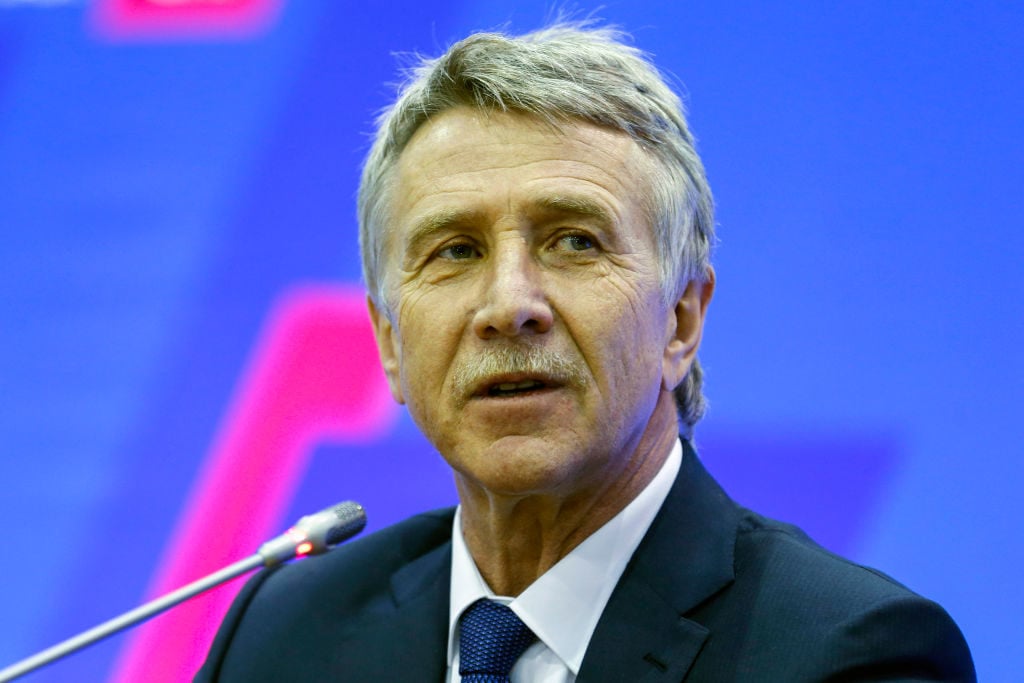
Russia’s privately owned gas producer Novatek CEO Leonid Mikhelson speaks to the media in the port of Sabetta on the Yamal Peninsula above the Arctic Circle on December 8, 2017. Photo by Maxim Zmeyev/AFP/Getty Images.
NATIONALITY: Russian
AGE: 62
ESTIMATED NET WORTH: $19.6 billion
BUSINESS ACTIVITIES: The CEO of Novatek, Russia’s largest natural gas producer, Mikhelson built his fortune during the rough-and-tumble privatization of Russia’s energy industries in the post-Soviet era. He also owns a 57.5 percent interest in Sibur, the gas processing and petrochemicals company.
ART-WORLD ACTIVITIES: Mikhelson’s V-A-C Foundation has commissioned Renzo Piano to turn a disused power station in Moscow into a contemporary art museum, which is slated to open in spring 2019. Through V-A-C, Mikhelson has been a major donor to the art and architecture biennales in Venice since 2013, and provided funding for the 2014 roving European exhibition Manifesta in Saint Petersburg. Since 2012, his foundation has also run a curatorial summer school in Moscow. Mikhelson’s contemporary art collection is worth around $200 million and includes a Carsten Höller slide, Philippe Parreno fish balloons, and work by Alighiero Boetti, Sarah Morris, Gerhard Richter, Tauba Auerbach, Cindy Sherman, and Gary Hume. He opened a V-A-C Foundation art space in Venice in 2017.
GEOPOLITICAL INTRIGUE: The leaked so-called Paradise Papers showed that Mikhelson, whose energy company has been subject to US sanctions since 2014 in retaliation for Russia’s annexation of Crimea, used the Bank of Utah as a stand-in for citizenship purposes to allow him to register his $65 million Gulfstream jet in the US. Although he was named in the “Kremlin Report,” he has not been linked to any political improprieties involving the US elections or Donald Trump.
FUN FACT: The V-A-C is named after his daughter, and stands for “Victoria, the Art of Being Contemporary.”
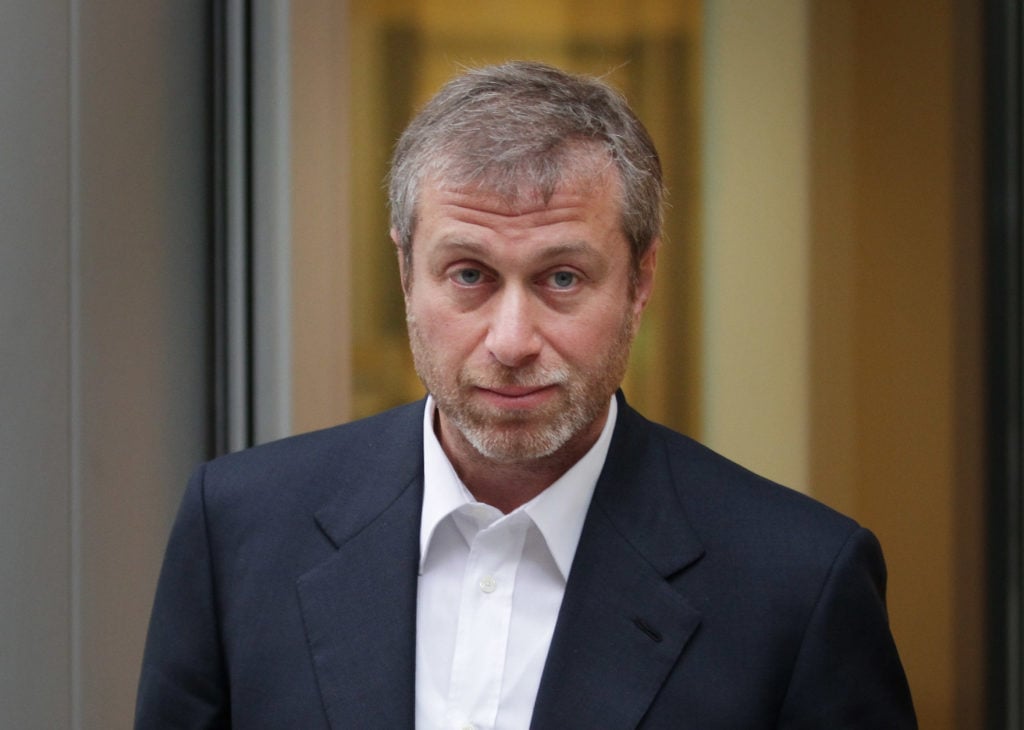
Businessman and Chelsea Football Club owner Roman Abramovich in 2011. Photo by Peter Macdiarmid/Getty Images.
NATIONALITY: Israeli-Russian
AGE: 51
ESTIMATED NET WORTH: $12.5 billion
BUSINESS ACTIVITIES: Abramovich made a fortune after he resold the Sibneft oil operation that he bought with fellow oligarch Boris Berezovsky for around £157 million in 1995. Ten years later, Abramovich sold the operation, along with stakes in the Aeroflot airline and an aluminum company, for a massive profit, becoming one of the biggest winners in the notorious so-called “Aluminum Wars.” He now owns the private investment company Millhouse LLC.
ART-WORLD ACTIVITIES: Abramovich was married to the collector Dasha Zhukova, herself the daughter of oligarch Alexander Zhukov, until they split last year. Together, the couple founded the Garage Museum of Contemporary Art in Moscow, which just turned 10 years old. Abramovich also owns an extensive art collection and made headlines in May 2008 for buying Lucian Freud’s Benefits Supervisor Sleeping for $33.6 million and Francis Bacon’s Triptych (1976) for $86.3 million within a 24-hour period, breaking records at the time for both the highest price paid for a work by a living artist (Freud) and for any work of contemporary art at auction (Bacon).
GEOPOLITICAL INTRIGUE: Unlike his former business partner Berezovsky, who fled Russia after falling out with Putin, Abramovich has stayed on good terms with the Russian leader. The billionaire, who was also named in the “Kremlin Report,” was able to run his businesses from London and Moscow until he had trouble renewing his “investor’s visa” to the UK during Britain’s larger crackdown on Russian visas, prompting his successful application for an Israeli passport. Abramovich has not been linked to any political improprieties involving the US elections or Trump.
FUN FACT: Abramovic is a huge soccer fan, and has owned the Chelsea soccer team since 2003. A spokesman refused to comment when asked if the billionaire’s delayed UK visa meant he missed being at Wembley to see his team win the FA Cup Final in May.
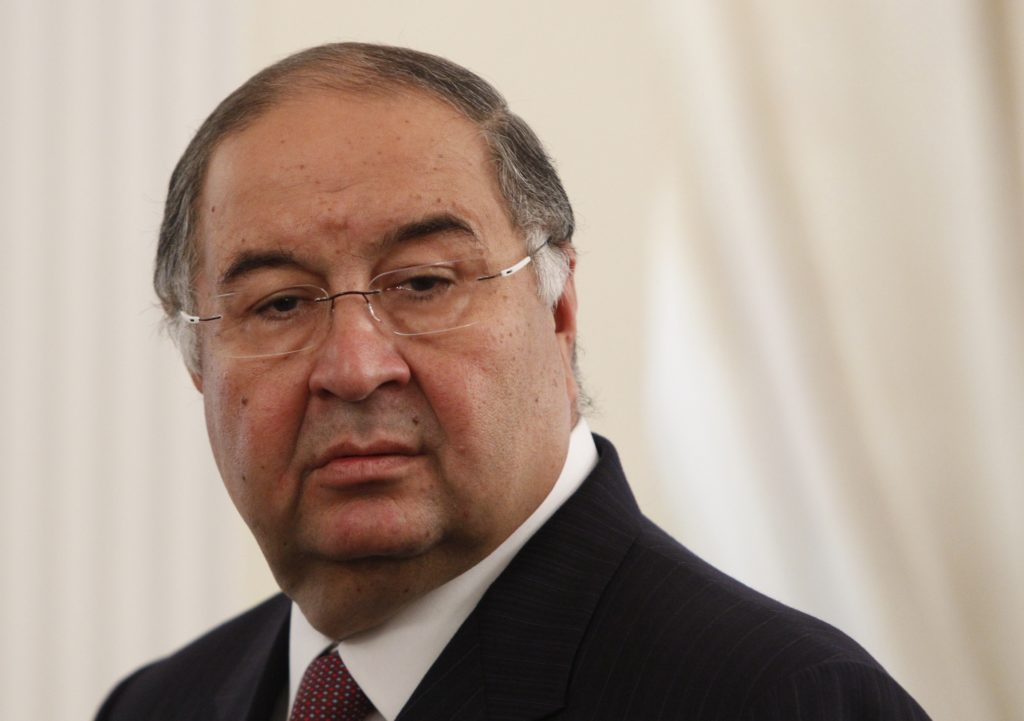
Alisher Usmanov. Photo: MAXIM SHEMETOV/AFP/Getty Images
NATIONALITY: Uzbek and Russian
AGE: 64
ESTIMATED NET WORTH: $15.6 billion
BUSINESS ACTIVITIES: The billionaire is the fifth-wealthiest Russian and holds a huge stake in Russia’s iron ore and steel giant Metalloinvest. He was also an early investor in social media and internet platforms—including Facebook—and currently owns stakes in the Chinese e-commerce platforms JD.com and Xiaomi. He has a 30 percent stake in the Arsenal soccer club, which he is reportedly looking to sell.
ART-WORLD ACTIVITIES: After the Soviet cellist Mstislav Rostropovich died in 2007, Usmanov bought the 450-piece art collection amassed by the exiled musician and his wife Galina Vishnevskaya, a famed opera singer. The price for the collection, complete with pre-revolutionary works including paintings, porcelain figures, vases, and ivory, was undisclosed, but Sotheby’s said it was “substantially higher” than the $40 million estimate. The billionaire then donated the entire hoard to the state-owned Konstantinovsky Palace outside of St. Petersburg. Usmanov later spent between $5 million and $10 million buying a large collection of Soviet cartoons, which he then donated to a Russian children’s television channel. In 2008, he funded a big loan exhibition of works by Turner from London’s Tate to Moscow’s Pushkin Museum.
GEOPOLITICAL INTRIGUE: Named in the “Kremlin Report,” Usmanov is very close to Putin and Roman Abramovic. As a young man in Soviet-era Tashkent, Usmanov was jailed for fraud. (He maintains that he was framed after being caught up in local power struggle.) The conviction was overturned in 2000. The business magnate later invested in the Russian newspaper Kommersant, which has been criticized for allegedly suppressing unfavorable material about Putin. He also has been accused of suppressing criticism about himself. In 2012, the Times reported that Usmanov had hired a PR firm to edit his biography on English Wikipedia to remove references to the later-overturned criminal conviction and other controversies. As of January 2015, the original Times article cannot be found on the newspaper’s website, in its archive, or via Google search.
Usmanov has not been linked to any political improprieties involving the US elections or Trump, although some US senators have focused on the fact that the billionaire, with his connections to the Russian state, made investments in the US social media industry several years ago.
FUN FACT: Usmanov, who competed for the Uzbek fencing team, amassed his first fortune making plastic bags, an extremely rare product under the Soviet Union.

Vladimir Potanin (left) speaks to Oleg Deripaska, during a meeting with Russian President Vladimir Putin at the Kremlin in Moscow. Alexey Panov/AFP/Getty Images.
NATIONALITY: Russian
AGE: 57
ESTIMATED NET WORTH: $15.9 billion
BUSINESS ACTIVITIES: Potanin made his wealth during Russia’s privatization in the 1990s. He formed one of post-Soviet Russia’s first banks and helped former Russian president Boris Yeltsin establish the controversial “loans-for-share” scheme that allowed some of the largest state-owned industrial assets to be bought cheaply in auctions that many allege were rigged. Today, Potanin owns a 30 percent stake in Norilsk Nickel, a formerly state-owned nickel and palladium mining company worth billions.
ART-WORLD ACTIVITIES: Potanin is a member of the board of trustees of the Solomon R. Guggenheim Foundation in New York and he is also chairman of the board of trustees of the State Hermitage Museum in St. Petersburg, Russia’s most renowned art museum. He has a charitable arts organization called the Vladimir Potanin Foundation, and in 2016 he donated 450 Russian and Soviet works of art to the Centre Pompidou in Paris. In recognition of the gift, Potanin was given the French Legion of Honor.
GEOPOLITICAL INTRIGUE: A supporter of Boris Yeltsin, Potanin helped him gain re-election over a Communist candidate. He is also a good friend Putin’s—they play hockey together—and was named in the United States’s “Kremlin Report” as a wealthy oligarch. Potanin has not been linked to any political improprieties involving the US elections or Trump.
FUN FACTS: Potanin was sued by his ex-wife for $15 billion, which would have been the biggest divorce settlement in history. The case was dismissed. He also owns a private ice-hockey rink. When asked by the Financial Times who was a better hockey player, Potanin or Putin, the nickel magnate said with a smile: “I am younger.”
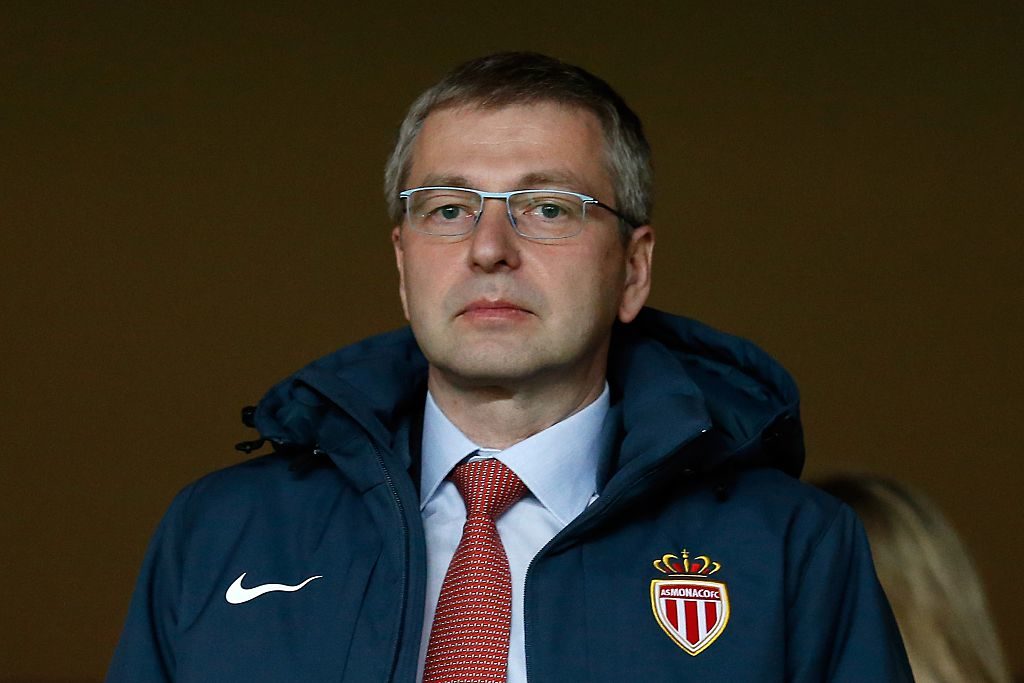
Dmitry Rybolovlev. VALERY HACHE/AFP/Getty Images
NATIONALITY: Russian
AGE: 51
ESTIMATED NET WORTH: $6.8 billion
BUSINESS ACTIVITIES: The tycoon made his wealth by acquiring Uralkali, a company that produces potash, a raw mineral used for fertilizer and other manufacturing. He built the company up over 15 years before ultimately selling off his shares. He is the president of the Monaco soccer club.
ART-WORLD ACTIVITIES: Rybolovlev has a major art collection that includes works by Gauguin, Rodin, Modigliani, Picasso, and many other important 19th- and 20th-century artists. Since 2015, he has been at the center of the so-called “Bouvier Affair,” an epic, international legal dispute between Swiss art dealer Yves Bouvier and the Russian collector that is still unresolved. Rybolovlev alleges that Bouvier defrauded him by as much as $1 billion through markups for 38 artworks he purchased from him. (Bouvier says he was acting as an art dealer and thus free to set his own prices.)
Rybolovlev, meanwhile, allegedly used offshore companies to hide art from his wife during their divorce proceedings (a charge he denies), and also ended up returning several Picasso artworks to the painter’s stepdaughter, Catherine Hutin-Blay, that he purchased through Bouvier and that Hutin-Blay claims had been stolen. (Bouvier, for his part, says that he believed he had legally purchased these Picasso works.)
But what thrust Rybolovlev the furthest into the spotlight of the art market was his 2017 sale of Leonardo da Vinci’s Salvator Mundi, which he bought from Bouvier for $127.5 million (a steep markup from the $80 million or so the dealer is believed to have paid for it) and then flipped for $450 million at Christie’s.
GEOPOLITICAL INTRIGUE: The press has doggedly covered Rybolovlev’s ties to President Trump: In 2008, he paid Trump $95 million for an oceanfront property that the then-reality show star and real estate entrepreneur had purchased for $41.4 million just four years earlier. Though Trump and Rybolovlev maintain that they have never met, there is also a trail of intersecting places where members of both their families were curiously visiting at the same time. Although commentators have focused on the high price Rybolovlev paid for the Trump property, a spokesperson for the Russian magnate said that the oceanfront estate has since been divided up into three lots—two of which reportedly sold for a combined $71 million million—and that “there is every chance the investment in the property will yield a good return.”
Rybolovlev was cleared of wrongdoing after one of the largest manmade sinkholes developed over a potash mine he used to own in the city of Berezniki. He was included in the 2016 “Panama Papers” for allegedly hiding assets in offshore accounts, an accusation he denies.
FUN FACT: His first business was in medicine. He and his father developed an alternative medical treatment method using magnetic fields.
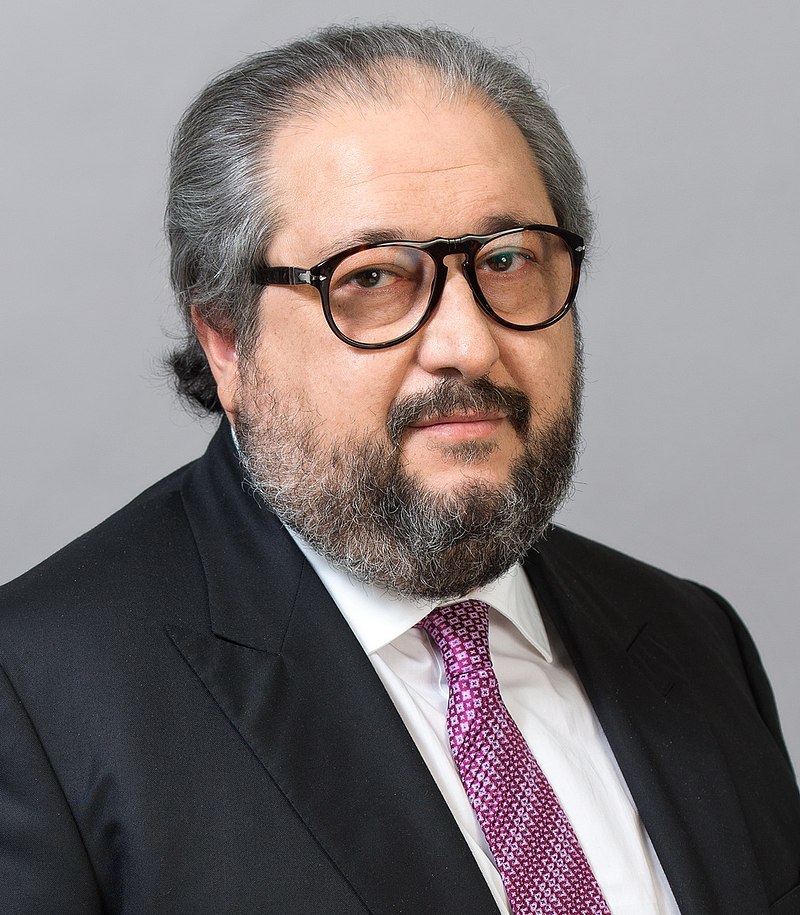
Boris Mints. Image: Wikimedia Commons.
NATIONALITY: Russian with a Maltese passport
AGE: 60
ESTIMATED NET WORTH: $1.3 billion
BUSINESS ACTIVITIES: Mints founded the Cyprus-based O1 Group, which owns pension funds and real estate in Russia, but this March his company was reported to be selling several of its Moscow office buildings and shopping centers, as well one of Russia’s largest pension funds. In May, Russian press reported that Mints and his three sons had left Russia for the UK.
ART-WORLD ACTIVITIES: Mints opened the Museum of Russian Impressionism in Moscow in 2016. Recently, the director told the Art Newspaper that “nothing has changed” since Mints’s reported move to the UK. The museum is housed in a Bolshevik-era factory converted by British architects John McAslan and Partners.
GEOPOLITICAL INTRIGUE: Named in the US Treasury’s “Kremlin Report,” Mints, like many oligarchs, first rose to riches under President Yeltsin’s privatization of state-owned businesses in the mid-1990s. Mints has not been linked to any political improprieties involving the US elections or Trump.
FUN FACTS: Mints is reported to be among a group of super-rich Russians who can travel freely within the European Union thanks to their Maltese passports. To get one, foreigners “contribute” €650,000 ($759,000) and buy or rent a luxury home on the island.
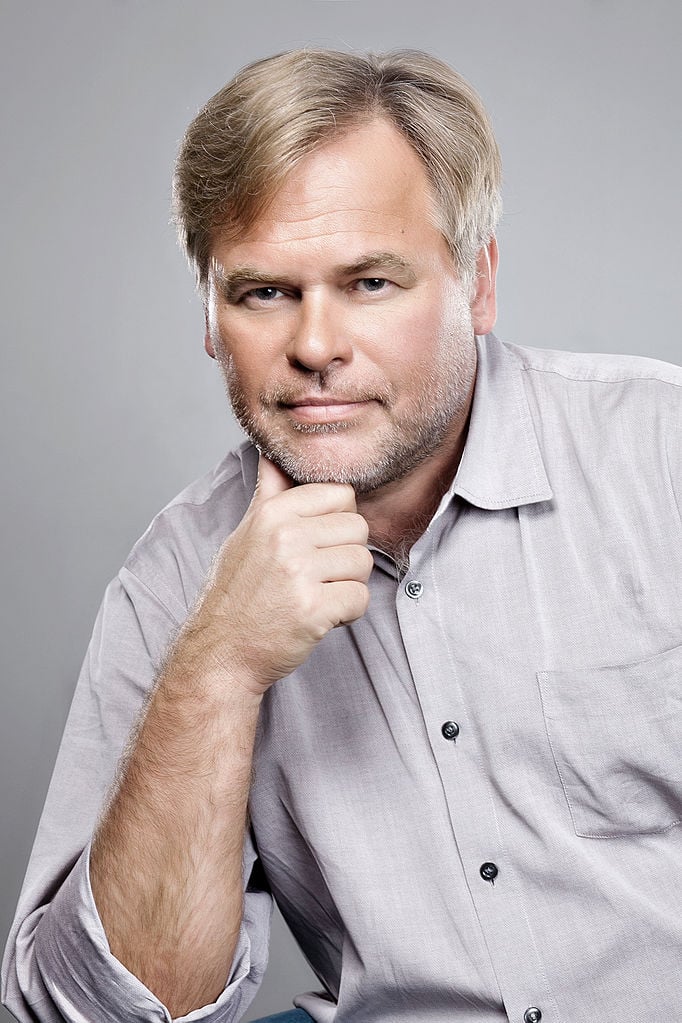
Eugene Kaspersky, courtesy Kaspersky Lab.
NATIONALITY: Russian
AGE: 52
ESTIMATED NET WORTH: $1.3 billion
BUSINESS ACTIVITIES: He is the co-founder and CEO of Kaspersky Lab, a cybersecurity and antivirus company with an estimated 400 million users.
ART-WORLD ACTIVITIES: Kaspersky Lab funded the inaugural Antarctic Biennial and Kaspersky sailed to the icy continent along with artists, curators, and journalists in 2017. Launched by the artist and former submariner Alexander Ponomarev, the biennial saw a high-profile resignation by Defne Ayas, director of the Witte de With Center for Contemporary Art in Rotterdam, from its board after the event imposed an under-35 age limit for participants without her approval. There is no indication that Kaspersky was involved in setting the age limit.
GEOPOLITICAL INTRIGUE: Kaspersky, who received training at a KGB technical institute as a young man and served in Soviet military intelligence, denies allegations that the company’s anti-virus software has been used by the Kremlin to spy on the West. His lawyers are currently fighting to appeal a US government-wide ban on his company’s products. Kaspersky was among those named in the “Kremlin Report” as a wealthy oligarch.
FUN FACTS: Berlin police raided French-Swiss artist Julian Charrière’s studio and confiscated a one-ton air cannon made for the Antarctic Biennial. The Swiss-French artist had hoped to use it to fire a coconut he’d collected from the Bikini Atoll.
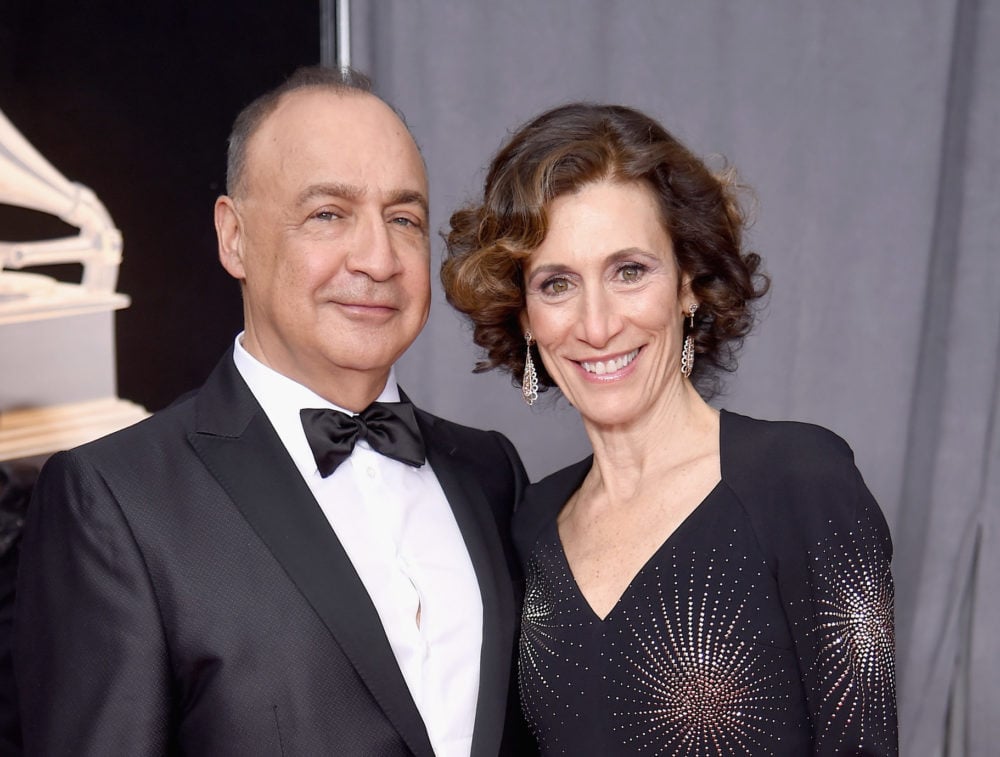
Leonard Blavatnik and wife Emily Appelson Blavatnik at the Grammy Awards on January 28, 2018 in New York City. Photo by Dimitrios Kambouris/Getty Images for NARAS.
NATIONALITY: British-American
AGE: 61
ESTIMATED NET WORTH: $20.4 billion
BUSINESS ACTIVITIES: Blavatnik, who owns Warner Music Group, also has interests in oil, petrochemicals, plastics, telecoms, media, and property. Born in Odessa, Ukraine, he emigrated with his family in 1978 to the US. He made his first fortune buying stakes in aluminum factories in the former Soviet Union.
ART-WORLD ACTIVITIES: Blavatnik is well known for being a patron of the arts, especially in London. He donated $65 million toward Tate Modern’s new wing, which was renamed the Blavatnik Building last year. His gift of around $6.5 million to the Victoria and Albert Museum means that visitors to its swanky new entrance arrive at the Blavatnik Hall. He also bought London’s Theatre Royal and is reputed to own an exceptional collection of Modern and contemporary art.
GEOPOLITICAL INTRIGUE: Blavatnik was a director of the Anglo-Russian oil company TNK-BP, earning $7 billion when it was brought out by the state-backed Russian energy giant Rosneft in 2013. (TNK-BP’s American-born onetime CEO Bob Dudley, meanwhile, claimed he was forced out in 2008 by an “orchestrated campaign of harassment.”) Blavatnik’s own conglomerate Access Industries has long donated to both Democrats and Republicans, including $1 million for Trump’s inauguration via the Presidential Inaugural Committee. (There are no allegations that these donations were made for any illicit purpose.) The philanthropist also gave a $100 million donation to Oxford University to open the Blavatnik School of Government. A professor of government and public policy at the institution, Bo Rothstein, then resigned in protest, telling the Guardian that “by donating to the inauguration of Donald Trump you are supporting Donald Trump.”
FUN FACT: Damien Hirst’s gilded woolly mammoth skeleton was Blavatnik’s gift to Miami Beach’s Faena District, which he is bankrolling to the tune of $1.2 billion as Argentine developer Alan Faena’s business partner. Blavatnik bought Hirst’s sculpture for $15 million at a charity auction at the Cannes Film Festival in 2014.
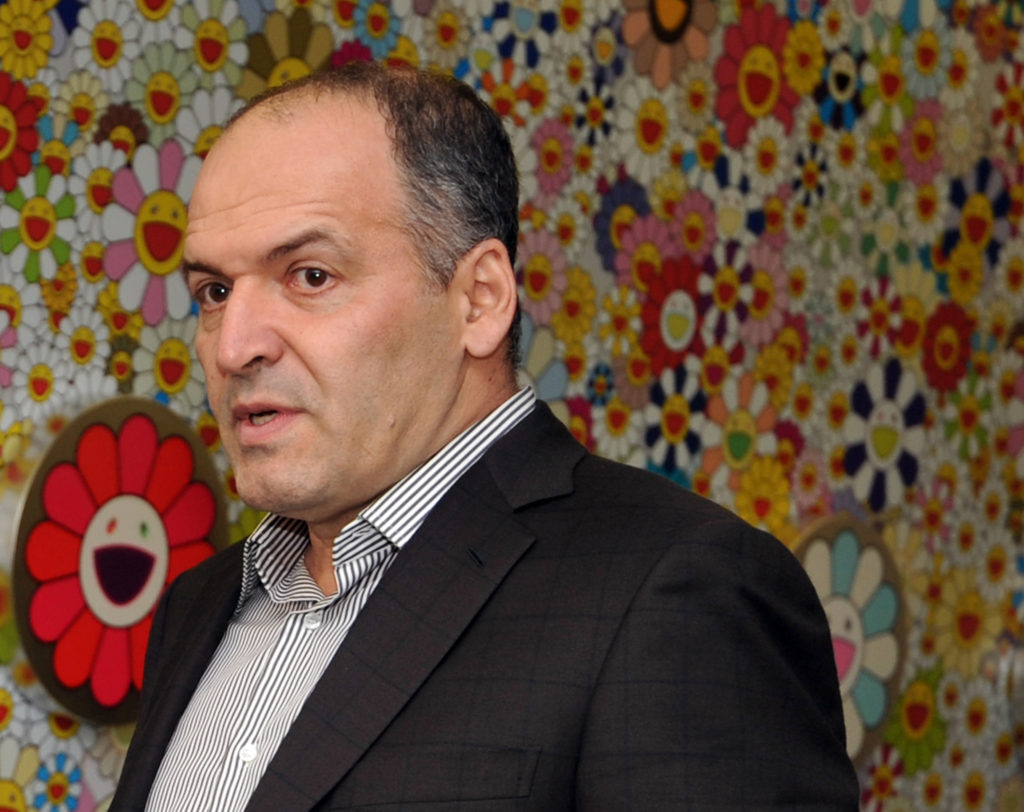
Viktor Pinchuk stands in front of a a work by Takashi Murakami during the opening of Future Generation Art Prize Group Exhibition at the Pinchuk Art Centre in Kiev, 2010. Photo by Natalia Slipchuk/AFP/Getty Images.
NATIONALITY: Ukrainian
AGE: 57
ESTIMATED NET WORTH: $1.44 billion
BUSINESS ACTIVITIES: Pinchuk founded the EastOne Group LLC, a London-based investment and advisory firm, as well as the Interpipe Group, a Ukrainian pipe and steel company that does significant business with Russia’s biggest oil companies and relies heavily on the Russian market. He also owns a number of media properties, including four television channels and Ukraine’s top-selling Russian-language newspaper.
ART-WORLD ACTIVITIES: Pinchuk has said he believes contemporary art “is a very important tool” for “modernizing” Ukraine, and in 2006 he opened Kiev’s PinchukArtCentre, which bills itself as the largest private museum in Eastern Europe, and which organized Ukraine’s Venice Biennale pavilions in 2007 and 2009. In 2009, he also created the Future Generation Art Prize, a $100,000 open-call award given out biannually to an artist under 35 years of age, who is then mentored by the likes of Jeff Koons, Damien Hirst, Andreas Gursky, and Takashi Murakami—all artists that Pinchuk collects heavily.
GEOPOLITICAL INTRIGUE: The tycoon is married to the daughter of former Ukrainian president Leonid Kuchma, who was dogged by charges of corruption and crackdowns on the media that eventually sparked the country’s Orange Revolution. Pinchuk has ties to US political leadership, too—on both sides of the aisle. He has donated between $10 million and $25 million to the Clinton Foundation (and provided his private plane for the Clintons’ use as well). He also reportedly paid the Trump Foundation $150,000 for a 21-minute video address at a conference in September 2015 (a fee that is being investigated by special counsel Robert Mueller). A former politician himself, Pinchuk served in Ukraine’s parliament between 1998 and 2006.
FUN FACT: His 2010 entry in the “TIME 100” list was written by the singer Elton John, whose photography collection has been exhibited at the PinchukArtCentre and with whom Pinchuk has collaborated to fight AIDS in Ukraine.